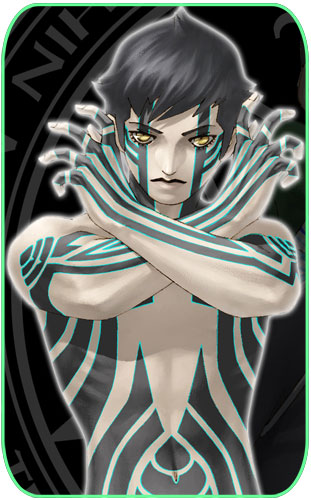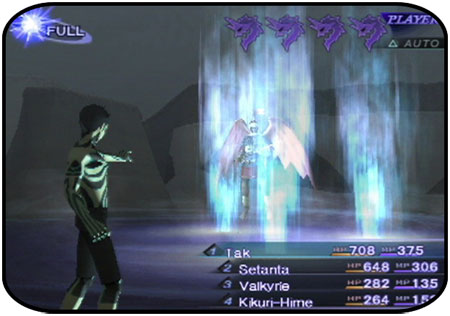
(Original image source: Atlus.)
Having put over 100 hours into Persona 3 FES, I was somewhat familiar with the framework of the Shin Megami Tensei series, and thus had a head start when playing Shin Megami Tensei III: Nocturne.
I knew my Agi, Bufu, Zio, Hama and Mudo, and I knew what the big deal was with Dia. The Persona in P3F had demonic counterparts in Nocturne, so I knew what to expect from Thor when I first went up against him. I also knew fusion — the act of crafting new demons with specific skills — would be an essential part of the game.
I knew all that and, as they say in the ‘toons, knowing is half the battle. The other half is cursing passionately when you realise you know jack.
The first Nocturne foe to give me real trouble was a boss named Matador, an arrogant skull-faced showboater. The first time I went up against him I was well and truly whupped as my three most-powerful demons (who were naturally by my side during the battle) were vulnerable to Mazan, his party-wide Force spell. Figures.
Much like P3F, Nocturne battles are all about weaknesses: exploiting them offensively and mitigating them defensively. If you know your opponents’ weaknesses and have the means to exploit them, victory is yours for the taking — often without taking any damage in return. Determining weaknesses is a simple matter of using the Analyze skill, which not only provides that crucial information, but pretty much tells you everything you’d want to know about a foe right down to its current health. It’s highly useful right up until you meet a boss at which point the Analyze skill becomes utterly useless.
(Why? Because providing a useful skill then depriving the player of it just when it would be truly useful is a very JRPG thing to do.)

(Original image source: Atlus.)
Knowing what to expect from Matador, I reloaded a savegame, levelled up, created a new demon which could laugh off Matador’s primary attacks then tried the boss again. Things went slightly better this time. Thanks to its innate ability to drain Force spells, Nozuchi, the Snake clan demon I crafted with the Matador in mind, was being actually healed by Mazan. Unfortunately, my player character didn’t fare as well since I couldn’t heal fast enough to cope with the damage from the same spell. Game Over screen again. This second failed attempt did, at the very least, point the way to victory. I clearly needed some manner of Force-resistance to protect the player character.
Enter the Magatama.
Magatama, insect-like creatures that provide demonic skills when ingested, are the reason why the player character is the most versatile member of the party, potentially the most powerful, and most likely the lynchpin during battle. Aside from providing valuable offensive, defensive or support skills, each Magatama provides the player character with resistance against some spell-types at the cost of being weak against others.
The player’s first Magatama is obtained at the start of the game and more can be acquired by defeating bosses or purchasing them at selected shops. I purchased Hifumi for 4000 Macca (a princely sum at that early point in the game) from a shop in the Great Underpass of Ginza, swallowed it to gain immunity from Force spells and pretty much steamrollered over Matador.
The player character is free to switch Magatama between battles, and choosing the right Magatama before a tough encounter will often be the difference between victory and another Game Over screen. The tricky part is knowing when to switch and what to switch to, and it will likely take a Game Over screen (and some passionate cursing) before the correct choice can be made.
